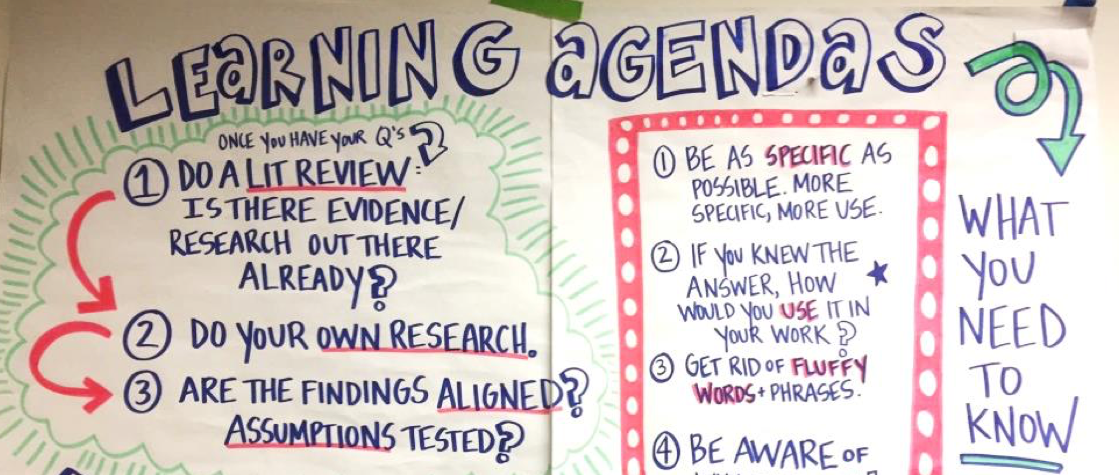We are “the Lauras:” Laura Adams, Institute for International Education, USAID Democracy Fellow in Learning Utilization, and Laura Ahearn, Dexis Consulting Group, Senior Monitoring, Evaluation, Research, and Learning Specialist with the USAID LEARN contract.
We both made mid-career moves from university faculties in the social sciences to the Learning Division of the Center of Excellence on Democracy, Human Rights and Governance (the DRG Center) at the U.S. Agency for International Development. We joined the DRG Center in 2015 to serve as a bridge between academic research and development practice. At this time, the DRG Center was making a big push to have a learning agenda that would improve DRG strategy and programming around the world.
Previous attempts at a learning agenda resulted in work that was oriented primarily towards academic research interests. This academic orientation led the practice-oriented staff to perceive the learning agenda as distant from their work. Thus, we faced an uphill battle convincing our colleagues that a new learning agenda could have field relevance. But we put on our translator hats, dusted off our ethnographic observation skills, and sought the buy-in of the folks who would ideally use the research findings. Several rounds of feedback and wordsmithing later, we had created a “living” learning agenda.

One example of how the living learning agenda is influencing strategy and programs comes from the human rights sector. Our human rights team wanted to know how different kinds of support for human rights defenders might influence program outcomes. Once this became a question on the DRG Center’s 2016 Learning Agenda, we could orient Learning Division work toward relevant work, including:
- Generation: through a cooperative agreement with the Institute for International Education, the DRG Center commissioned a multi-disciplinary academic team to review the literature on this topic, and we helped them better speak USAID’s language.
- Dissemination: the final literature review will be published on IIE’s website, and the Learning Division will turn its findings into infographics and two-pagers for our DRG cadre and the broader DRG community of practice.
- Utilization: The human rights team was so jazzed by the findings of the draft literature review that they immediately began incorporating them into their trainings for USAID staff. We also upped utilization by coordinating consultations between the academics and our implementing partners.
- Bridging: We facilitated follow-on research projects, strengthening the long-term connections between the academic and policy worlds.
Hot Tips:
Having academics inside a donor or implementer organization opens up important channels for evidence to be incorporated into DRG programming and strategy. Our work has also helped academics better understand what policy implementers want and need from research.
A living learning agenda is built on questions of keen interest to the users of evidence and promotes iterative interaction and communication across different groups of stakeholders. When a learning agenda has genuine buy-in from its potential users, research findings can go flying off the shelf before the final product is even submitted!
The American Evaluation Association is celebrating Democracy & Governance TIG Week with our colleagues in the Democracy & Governance Topical Interest Group. The contributions all this week to aea365 come from our DG TIG members. Do you have questions, concerns, kudos, or content to extend this aea365 contribution? Please add them in the comments section for this post on the aea365 webpage so that we may enrich our community of practice. Would you like to submit an aea365 Tip? Please send a note of interest to aea365@eval.org. aea365 is sponsored by the American Evaluation Association and provides a Tip-a-Day by and for evaluators.
